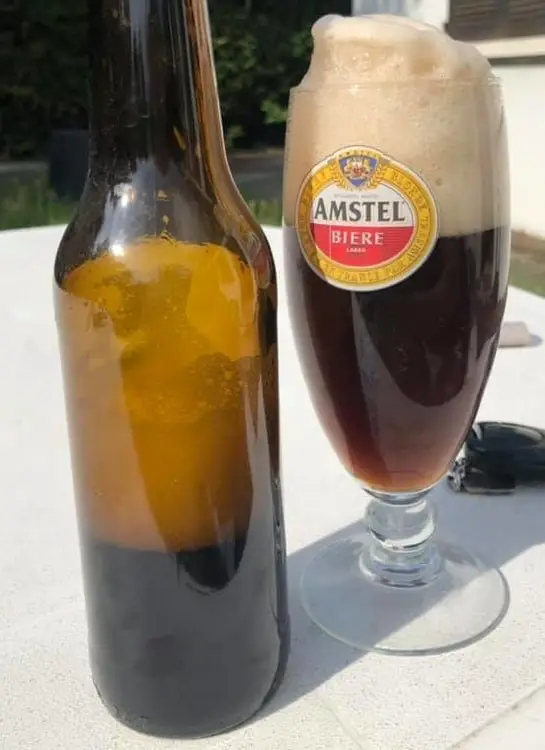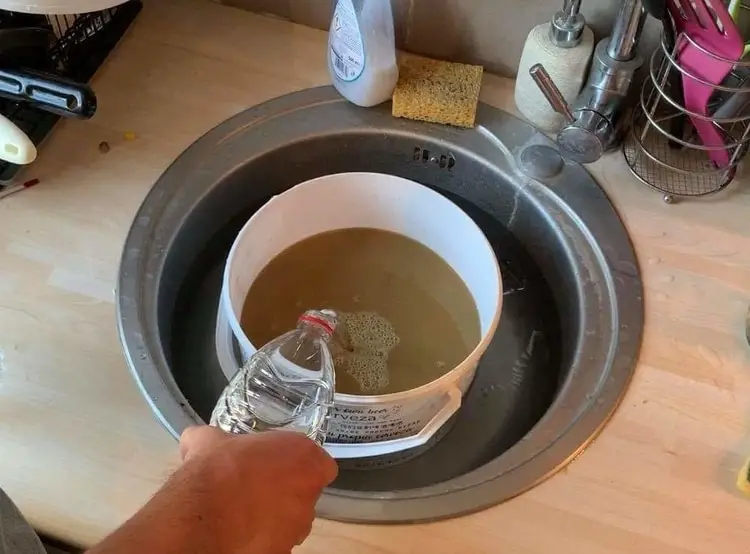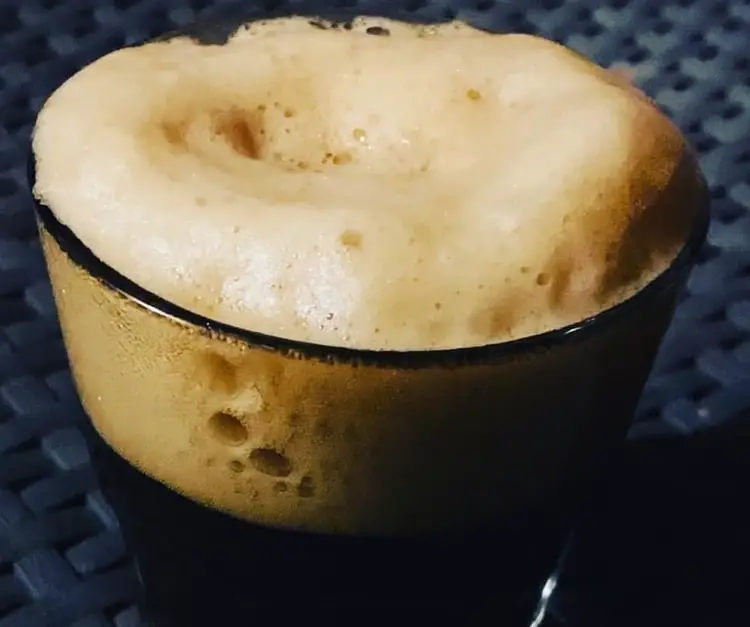Brewing beer is an adventure from start to finish. At least that is how I viewed it. The smallest task is as vital as the largest, most complex. Such is the case with priming sugar. We add priming sugar upon packaging to bring life to our beer, bring bubbles and naturally carbonate. What happens if I add too much?
Adding the correct amount of priming sugar is critical to successful brewing. Mistakes happen and we sometimes over-prime. You can save your beer through several methods: diluting, temperature control, and early consumption. There is always a solution.
Why do we use priming sugar?
Priming sugar is added to beer when you package.
Its purpose is not to sweeten, nor add more fermentables, but add that last little bit of food for the yeast.
There are two primary by-products of fermentation we are concerned with: ethyl alcohol and CO2.
In this last stage of brewing we are ready for packaging; bottling or kegging.
We add just the right amount of sugar and the residual yeast in solution will eat the sugar and the CO2 is trapped in your sealed bottle.
There you have it, all-natural bubbles.
Best choices for priming
The best choice for priming is dextrose (corn sugar).
It is inexpensive, neutral in flavor, and near 100% fermentable.
We discuss this at length in the article Fizz Drops vs. Priming Sugar.
A quick review of the best method for priming:
- Rack beer from secondary fermenter to bottling bucket
- Dissolve ¾ cup of dextrose in about ½ pint of water, boil for 5 m.
- Add sugar to beer, stir gently and well
- Bottle beer from spigot, filling from the bottom
- Re-stir beer every 8 beers or so, keep the sugar more evenly distributed
- This should produce an ideal amount of CO2 in the beer, 2 – 2.2 volumes. The process will take 2-4 weeks to complete.
I added too much sugar! Now what?
Mistakes happen. One is that we add too much sugar.
You have added 1 cup of sugar instead of ¾ cup.
You use a different sugar, table sugar for example, and it has a different density.
The worst that can happen
Few things are more demoralizing and sinister than to hear the muffled, POP, POP POOOFT!!!
What was THAT??!! The worst case scenario has occurred.
That my friend was the sound of exploding bottles in your closet. This is not only demoralizing but extremely messy, dangerous and can set off a chain reaction of adjacent bottles, already under stress.
Less bad and also no fun are gushers. Gushers happen to over-primed beers. We quickly learn to open them in the sink. Why you ask? There is so much carbonation the beer spontaneously flows out of the bottle and down the drain. You may end up with 4-5 ounces left in the bottle. The beer will be carbonated like soda so leaves a residual popping sensation in your mouth, best suited to soda-POP.

Fixing over-primed beer
First rule of brewing and intergalactic travel DON’T PANIC! (Douglas Adams… anyone?)
There are several things you can do.
Almost everything can be fixed or amended on brew day, as long as you continue to keep everything absolutely sanitary.
1) Dilute the beer
Beer is carbonated at a certain rate, measured in volumes; that is how much gas does it hold in solution.
Standard for US microbrews is 2.2 volumes, English Real Ale can be 2, Budweiser is about 2.6, and soda pop as mentioned above is about 3.
Without dwelling on the reasons why, you added 1 cup of corn sugar. This may put you north of 2.7 volumes bordering of soda bubbles.
OK, do you have any other beer around?

Some brew in one-gallon batches or three-gallon batches as well. Add a corresponding amount of additional beer, relative to the overused sugar. Sure, the styles may not match but you are saving your beer.
Bottling buckets usually are bigger than fermenters, and I recommend them to be at least seven gallons. This gives you room to work, stir and…add more beer if you need to.
It may break your heart, but you could add water.
IF you produced a high-gravity beer, OG 1.075, FG 1.016, your alcohol will be 6.5 to 8%. You could add some clean water. It will still end up at 4.5- 6%, a respectable beverage.
It is not ideal but will save the beer.
2) Cooling the beer
If you have the space, cooling is the easiest and most non-intrusive option. Taste your beer every five days from bottling. When it gets to the desired level of bubbles, put it all into a refrigerator. This requires extra space which not everyone has.
If it is an ale, the yeast will go to sleep and it will discontinue making bubbles. The bottles will not burst, and you are safe. That was easy!
Lagers beware! They will ferment at refrigerator temperatures, so this method may be ineffective.
Important Note: CO2 will come out of solution when beer is warm; the gas will escape faster, more foam. Cool your bottles before testing.
3) Use a stronger container
If you find yourself with a highly primed beer and have no way to dilute it, nor cool it, you can put it into steel, or a high-tensile plastic beer keg.
It will not explode.
Again, as in the cooling it section, taste it every 5 days.
When it gets to where you like it, ice it down and have a cookout, birthday party or a movie marathon.
There are worse reasons to get together with friends than you all must drink five gallons of delicious beer together.
JEEZ, what a terrible friend you are!
As noted above, cool beer is best to test for bubbles, as warm beer will push out bubbles faster.
If kegging your beer, you must make your best guess, as you will not be able to cool your samples first.
4) Throw a party
As mentioned in the above two sections, whether your beer is in bottles or kegs, you taste it every five days or so until you get the CO2 level that tastes right.
Time to get together and consume. Someone has a reason to celebrate something. If you have no birthdays, holidays nor anniversaries, use your imagination, make something up!
Final Thoughts – Dealing with over-primed beer
You’ve followed several methods of dealing with your bottling day space out. It happens to all of us.
Once, I had a brewer friend named Marty. We both brewed in SC Brewpubs very close to one another. He called me and said, “Come over man, I got a problem.”
Five minutes later I arrived, and he said, “What happens when you put too much salt in a beer.” He had salted his brew kettle to an unknown degree.
“What!” I replied, “how much did you use?”
“I don’t know he said, shrugging and shaking his head,” letting out a remorseful sigh. “I had all these shakers, I poured them in a bowl, tossed them in. I lost my mind.”
The point is, we all will do inexplicable things in life. Brewing is no different. His Salty Ale turned out fine, and yours will too. Be flexible, think on your feet and follow one of my methods above. Keep your head, don’t panic and you will enjoy that beer, just perhaps not in the way you first thought.

